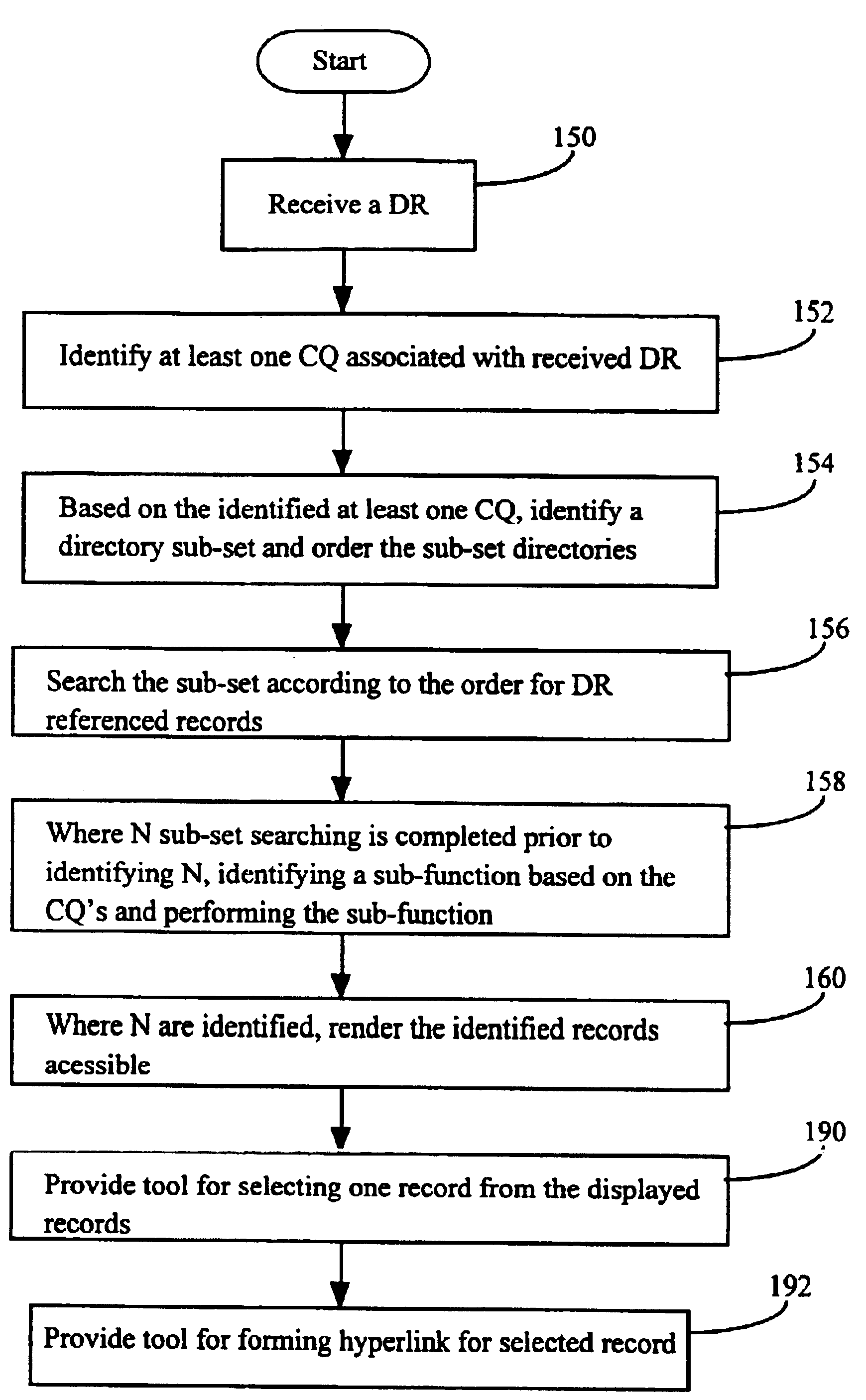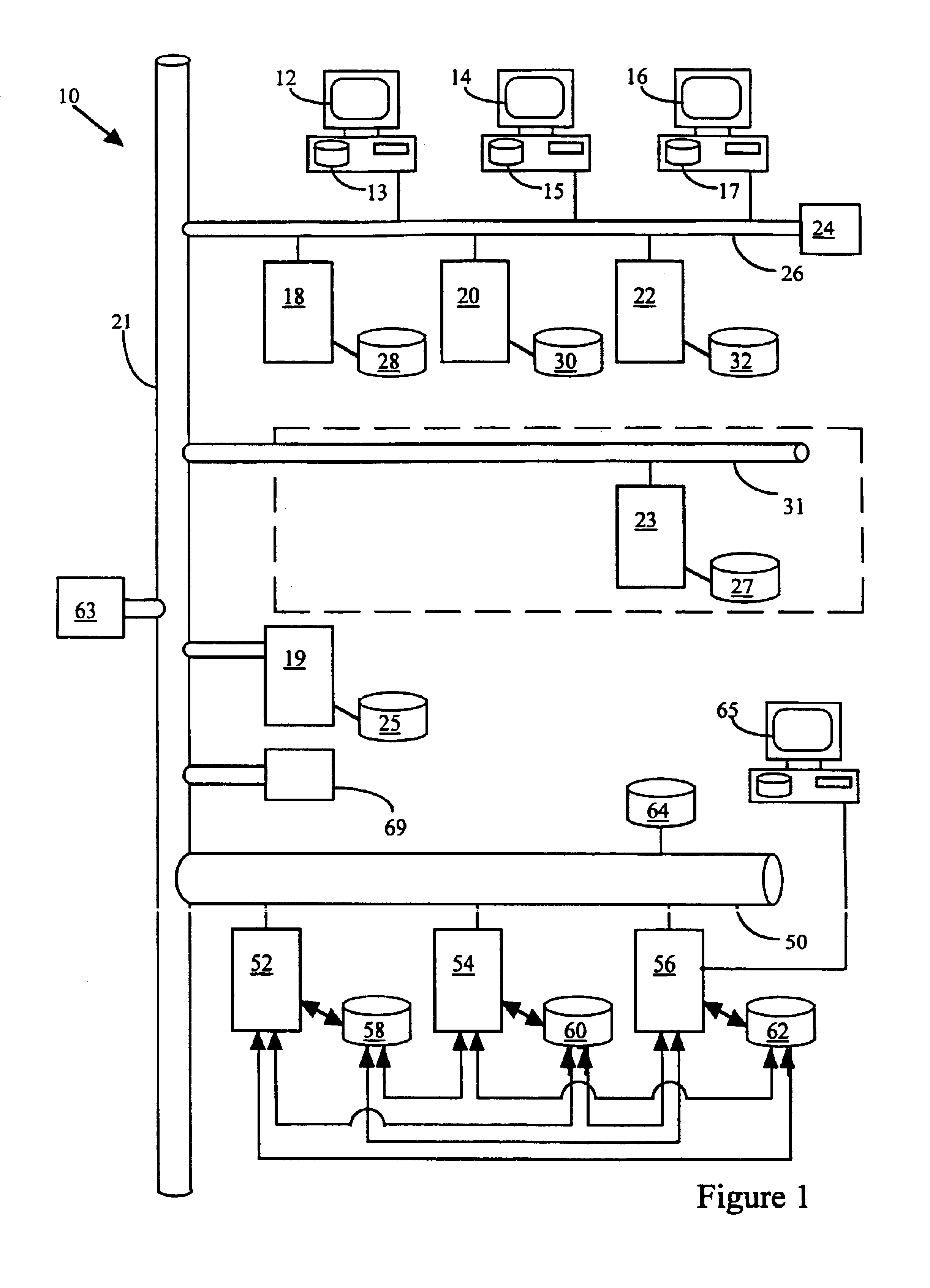Tiered and content based database searching
a database and content technology, applied in the field of electronic search engines, can solve the problems of affecting the quality of search results, and the amount of data accessible via the internet is large, and achieves the effect of efficient yielding high-quality search results
- Summary
- Abstract
- Description
- Claims
- Application Information
AI Technical Summary
Benefits of technology
Problems solved by technology
Method used
Image
Examples
Embodiment Construction
[0046]Referring now to the drawings wherein like reference numerals correspond to like components throughout the several views and, more specifically, referring to FIG. 1, the present invention will be described in the context of a system including linked workstations, servers and databases. The exemplary system 10 includes three workstations 12, 14 and 16, three local servers 18, 20 and 22 and a first search processor 24, all of which are linked by a local area network LAN 26. Each of local servers 18, 20 and 22 is linked to a separate set of databases 28, 30 and 32, respectively and is capable of accessing, searching and manipulating records stored in linked databases and sub-sets of those databases.
[0047]In the present example it will be assumed that LAN 26 serves (i.e., links together system components at) a single medical facility (hereinafter the “local facility”) and system users will generically be referred to as physicians. Any query provided by a system user will be referr...
PUM
 Login to View More
Login to View More Abstract
Description
Claims
Application Information
 Login to View More
Login to View More - R&D
- Intellectual Property
- Life Sciences
- Materials
- Tech Scout
- Unparalleled Data Quality
- Higher Quality Content
- 60% Fewer Hallucinations
Browse by: Latest US Patents, China's latest patents, Technical Efficacy Thesaurus, Application Domain, Technology Topic, Popular Technical Reports.
© 2025 PatSnap. All rights reserved.Legal|Privacy policy|Modern Slavery Act Transparency Statement|Sitemap|About US| Contact US: help@patsnap.com



